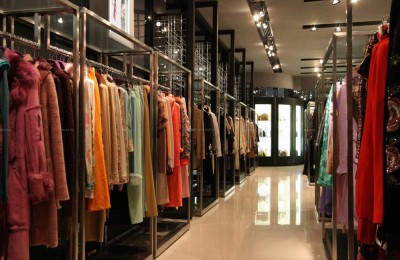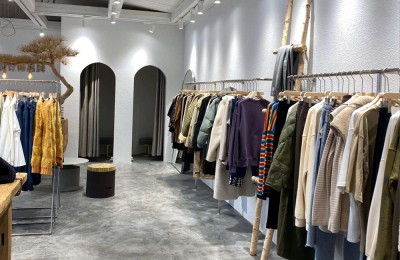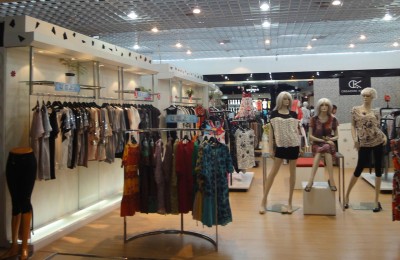“This year’s home textile gray fabrics are better than last year, and the sales volume in the first half of the year is generally good.” said the person in charge of a wide-width home textile gray fabric manufacturer.
As we all know, since the beginning of this year, the sales of fabric gray fabrics have declined, and the entire textile industry has been in recession. The field of home textile fabrics accounts for about 5% in Wujiang area. So in the general environment, are home textile fabrics really unaffected and “suddenly rising”?
There are fewer extra-wide machines, and the supply of 2.8-meter wide fabrics exceeds demand
After the editor’s visit and research, the home textile industry Such a situation does exist, but it does not represent the entire home textile market. The cloth boss at the beginning said that the sales of home textile gray fabrics are good, but he is actually talking about the wider 2.8-meter gray fabrics. It is understood that in the first half of this year, wide-width home textile fabrics with a width of 2.8 meters were relatively popular and the demand was high. There are not many manufacturers of looms with a width of 2.8 meters in the Wujiang area. After the renovation of water-jet looms in recent years, there are even fewer looms of this type. Therefore, there are loom manufacturers with a width of 2.8 meters. Due to this wave of craze, the number of orders increased.
In fact, the entire home textile industry and the fabric industry are “in the same boat” and are facing the problem of shrinking orders. Nowadays, home textile products are more wide-width and less narrow-width. It can also be seen that wide-width home textiles still have a certain market, while narrow-width home textiles are in recession due to shrinking orders and overcapacity.
Narrow-width production capacity is overcapacity and order volume is shrinking
In 2018, the elimination rate of home textile brands was close to 50%. In 2019, the first quarter report data of Duaike, Fuanna, and Luolai Life showed that the net profits attributable to shareholders of listed companies fell by 38.27%, 16.32%, and 7.59% respectively.
The performance decline of terminal home textile brands has directly affected the sales of downstream home textile gray fabric companies. According to incomplete statistics, the order volume of home textile gray fabric factories in the first half of this year fell by 20%-30% compared with the same period last year. Gray fabric manufacturers reported that some goods were sold out in the first quarter and sales were acceptable. In the second quarter, market sales gradually weakened and inventory pressure was high.
What are the reasons for shrinking orders, elimination of enterprises, and declining profits in the home textile industry?
1 The rise of home textile clusters and scattered purchasing power
Although the proportion of home textile manufacturers in Wujiang is only 5 %, but areas such as Nantong and North Jiangsu are where home textile manufacturers are concentrated. Taking Shuyang as an example, the region’s home textile industry is its characteristic industry. There are more than 80 textile companies in the area, including more than 30 home textile companies, and efforts are currently being made to build a 100-billion-dollar home textile specialty industry cluster.
In recent years, affected by environmental protection regulations, the market has set off a trend Due to the relocation boom, new textile industrial parks have been built in many areas, leading to the rise of new home textile industry clusters. The explosion of production capacity has distracted the market’s attention from purchasing.
2 Sino-US trade friction, exports of goods to the United States have decreased
Affected by Sino-US trade friction, China’s exports to the United States have decreased The overall quantity of goods has declined, and home textile products are no exception. Related products such as sofa fabrics and curtain fabrics indirectly exported by home textile companies have been impacted in the U.S. market where fabric accessories are sold. Mr. Lu, who is mainly engaged in Tekuan home textiles, said that the overall sales volume in the first half of this year was not as good as last year. The main reason was that the Sino-US trade war caused American customers to place fewer orders. The overall economic situation this year is poor, coupled with the Sino-US trade war, the entire market lacks confidence. Manager Qian, a home textile fabric trader, said: “We have an American customer who makes slub fabrics. He has not placed any new orders since the trade war started in May.”
3 Substitutes are flooding into the market, and the demand for home textile fabrics has decreased
According to the results of the “Textile and Garment Enterprise Management Questionnaire”, the new order index for home textiles in the first quarter was 47.75, lower than 2018 The index for each period of the year. Among them, the foreign orders and production index was 51.1, down 8.35 points from the same period last year. From the above data, it can be seen that the market demand for home textile fabrics is decreasing. The demand for home textile fabrics has decreased, and people’s purchasing power has also declined due to macroeconomic effects. In addition, with the advancement of the times, home decoration products are also constantly updated, and a large number of substitute products have flooded into the home textile market, squeezing the sales volume of home textile fabrics.
4 The number of new housing units decreased, and home textile fabrics decreased accordingly
Home textiles belong to the post-real estate industry The cyclical industry has become an influencing factor in the growth of the home textile market driven by new housing purchases in recent years. First, newly purchased housing directly brings new rigid demand for home textiles; second, the demand for renewal includes updating old and damaged home textiles, as well as consumption upgrades to improve the quality of home textiles. Looking at the sales of residential commercial housing, the sales area of commercial housing nationwide in the first half of 2019 was 757.86 million square meters, a year-on-year decrease of 1.8%. With the decrease in new housing, the demand for home textiles has also been affected to a certain extent and declined.
Editor’s Note
Despite the ups and downs of the home textile market in the past thirty years, it has generally been growing rapidly. Growth trend. Although the overall situation of the home textile industry this year is not ideal, the sales of the wide-width fabrics mentioned at the beginning are good, which means that innovation is an inevitable trend in the future. If you just stick to the old products, they will only gradually become obsolete. . Home textile companies should seize their advantages, deepen the development of home textile fabrics, and open up a larger market.
</p








